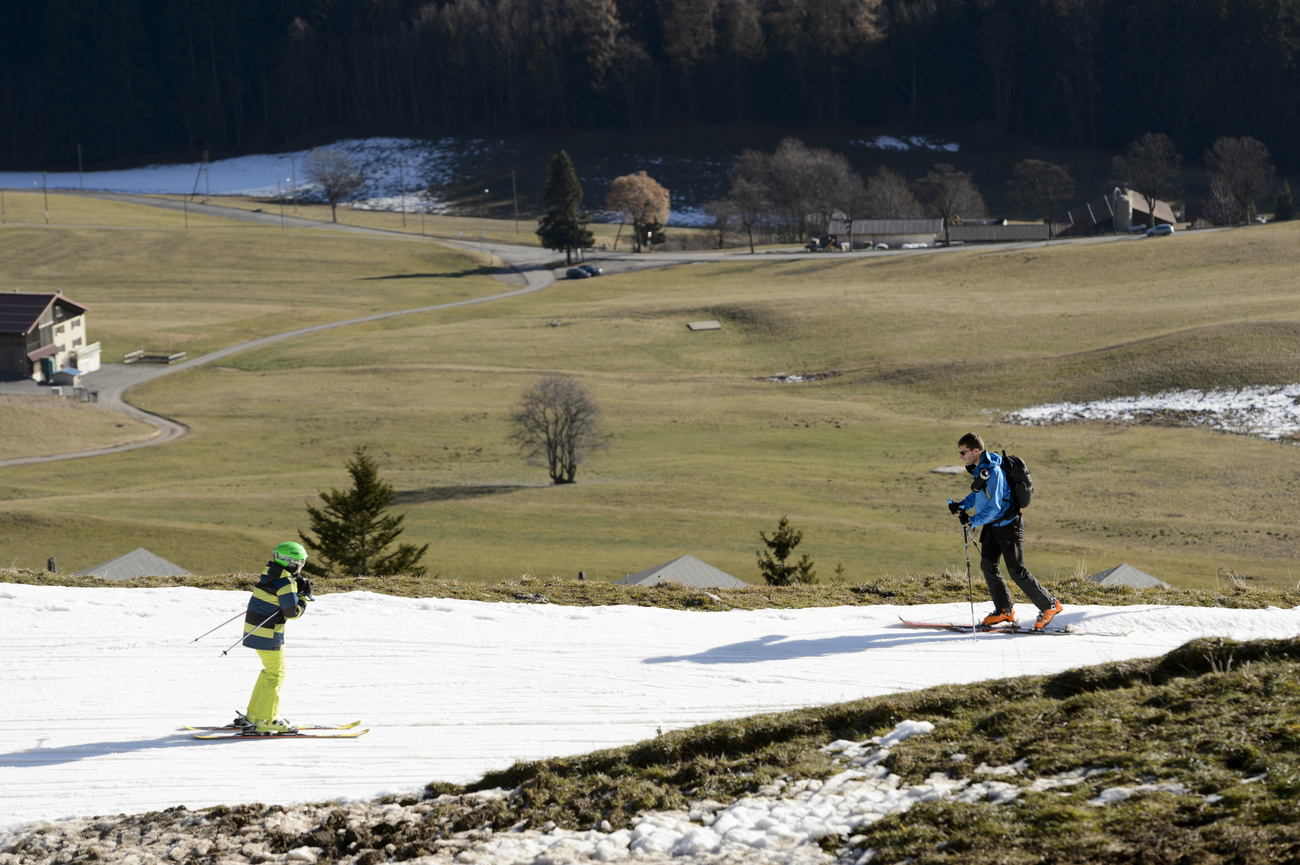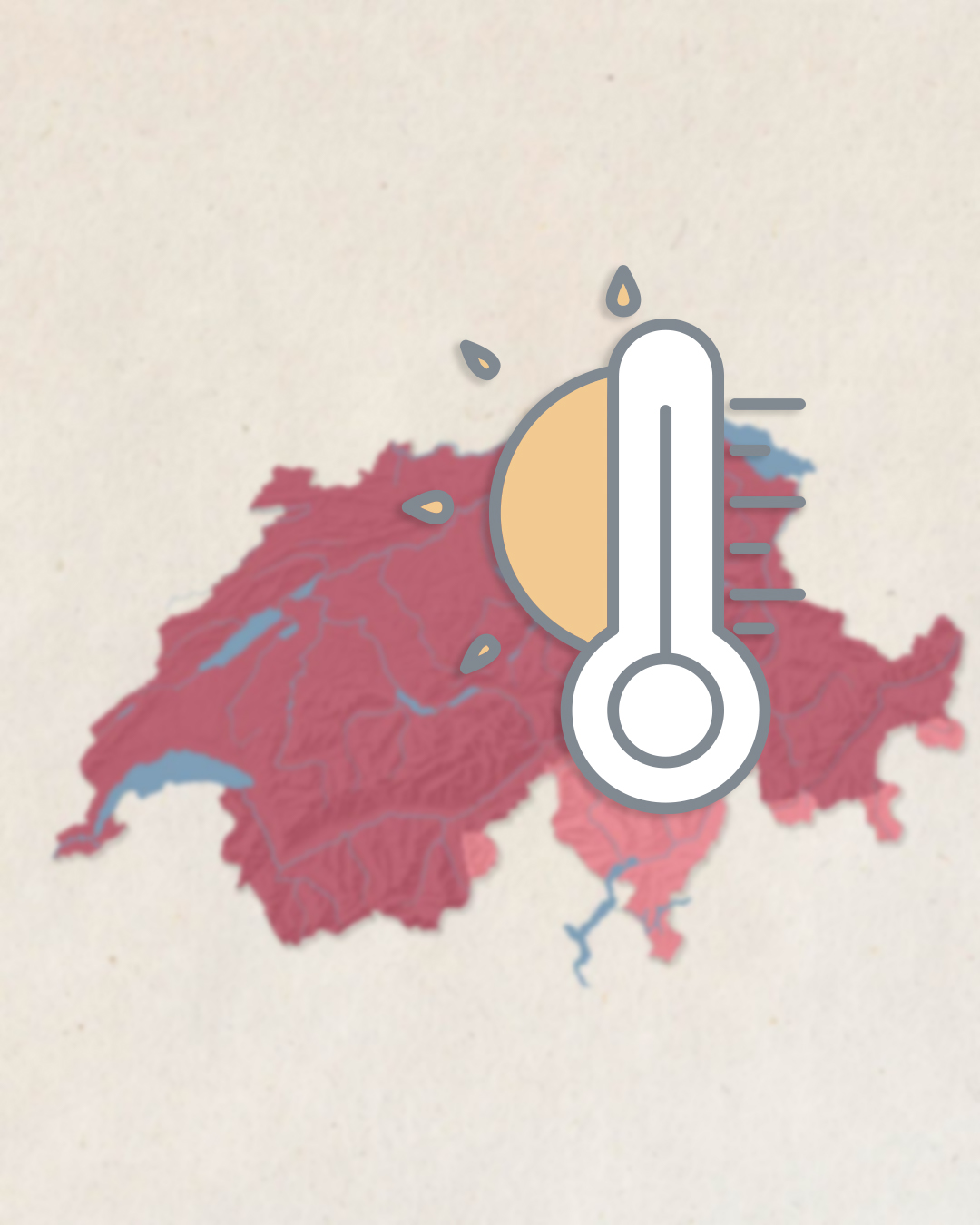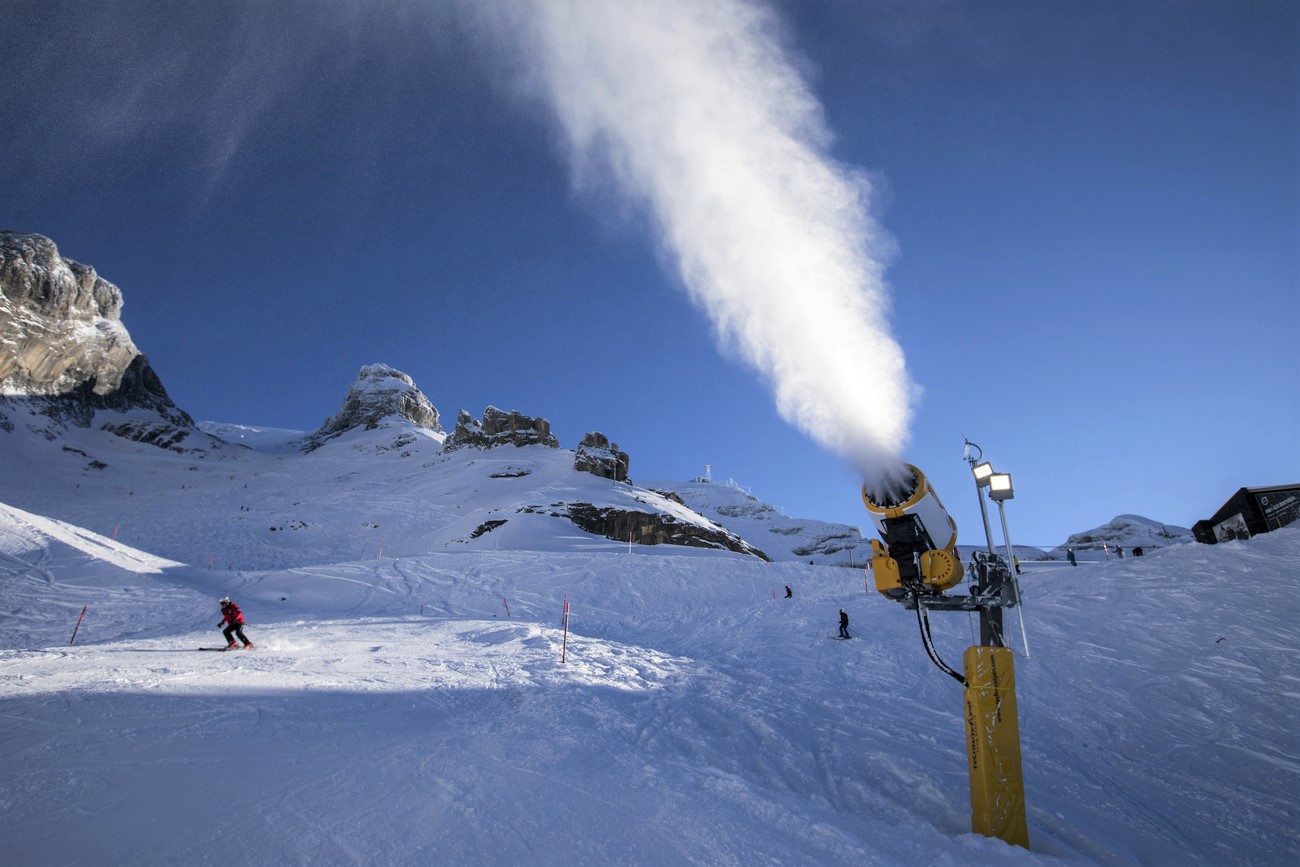
‘Greening’ of the Alps is visible from space

The impact of global warming in the Alps can be seen from space, according to Swiss scientists. Vegetation above the tree line has increased in almost 80% of the Alpine area.
The most marked change is a pronounced and widespread increase in vegetation at high altitudes in the Alps, concluded research by the teams of Sabine Rumpf at the University of Basel and Antoine Guisan and Grégoire Mariethoz at the University of Lausanne. It was published on Thursday in the journal ScienceExternal link.
In collaboration with research groups based in the Netherlands and Finland, they examined changes in snow cover and vegetation using high-resolution satellite data collected between 1984 and 2021.
Over this period, plant biomass has increased above the tree line in more than 77% of the Alps. This phenomenon of “greening” due to climate change is already well documented in the Arctic and is beginning to be identified in the mountains as well.
Increase in plant biomass
“The scale of change is absolutely massive in the Alps,” says lead author Sabine Rumpf. The Alps are becoming greener, as vegetation is colonising new areas, becoming denser and higher, she said. The phenomenon is most pronounced at altitudes of around 2,300 metres.
Previous studies have focused on the impact of warming on Alpine biodiversity and changes in the distribution of plant species. Until now, no one had conducted such a comprehensive analysis of the evolution of plant productivity in the Alps.
The authors show that the increase in plant biomass is primarily attributable to increased rainfall and the lengthening of the plant-growing season as a result of rising temperatures.
“Alpine plants are adapted to harsh conditions, but they are not very competitive,” Rumpf said. As environmental conditions change, these highly specialised species lose their advantage and are overtaken by competition, she said. “The unique biodiversity of the Alps is therefore under considerable pressure.”

More
The Swiss Alps are hotter than ever
Slight reduction in snow cover
In contrast to the vegetation, the extent of snow cover above the tree line has changed only slightly since 1984. The researchers excluded regions below 1,700 metres, glaciers and forests from their analysis and highlighted that the snow cover had decreased significantly in almost 10% of the remaining regions.
This loss of snow cover can be observed above all in places where, 40 years ago, it remained all year round, at an altitude of around 3,000 metres. “This has consequences for the entire water cycle,” Rumpf said, pointing to implications for the supply of drinking water in mountain regions.
With global warming, the Alps will become less and less white and more and more green, entering a vicious circle. “Greener mountains mean less reflection of sunlight, which will further increase warming,” she concluded.

More
Artificial snow saves Olympics and Alpine ski resorts

In compliance with the JTI standards
More: SWI swissinfo.ch certified by the Journalism Trust Initiative
















![The four-metre-long painting "Sonntag der Bergbauern" [Sunday of the Mountain Farmers, 1923-24/26] had to be removed by a crane from the German Chancellery in Berlin for the exhibition in Bern.](https://www.swissinfo.ch/content/wp-content/uploads/sites/13/2025/12/01_Pressebild_KirchnerxKirchner.jpg?ver=bb19e376)














You can find an overview of ongoing debates with our journalists here . Please join us!
If you want to start a conversation about a topic raised in this article or want to report factual errors, email us at english@swissinfo.ch.